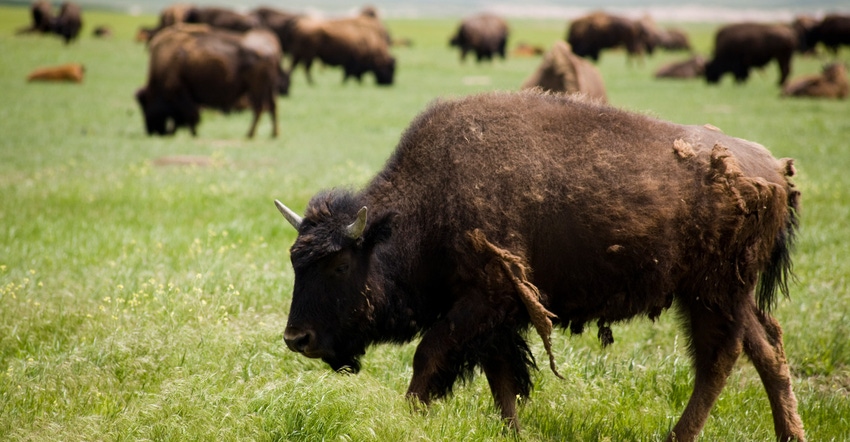
The South Dakota State University Center of Excellence for Bison Studies in collaboration with the Texas A&M AgriLife Extension Service recently published “Getting Started with Bison Ranching” as a guide for ranchers who are considering incorporating the native ruminant to their operation.
This resource was created to highlight the opportunities and challenges that exist for those interested in transitioning to bison ranching, whether they are new to ranching or have a background in ranching other livestock species.
The information covers a variety of topics including herd health, managing rangelands and pasture for bison, economic feasibility and more.
Growing interest in bison ranching
Chase Brooke, the publication’s co-author and AgriLife Extension agriculture and natural resources agent, Collin County, said bison ranching is becoming increasingly popular due to the increased economic profitability that can be achieved compared to other livestock species.
“From an AgriLife Extension mission perspective, we are seeing a growing interest in bison production and the desire for more information. This publication directly addresses that need,” Brooke said. “The learning curve is always steepest at the beginning of something relatively new, and this collaboration with South Dakota State is dedicated to reducing that curve for producers.”
Bison are desirable among ranchers for their economic opportunity but also from a land/resource conservation and sustainability standpoint, he said.
The species contributes to rangeland conservation efforts by integrating into native rangeland ecosystems, he said. Having evolved with the native plant species found throughout the Great Plains, bison grazing habits utilize forages more sustainably and maintain long-term forage health.
“The main challenge is that producers cannot treat bison like cattle,” he said. “Their behavior, habits, nutrient needs and facility requirements are different, so making producers aware of the opportunities and challenges related to bison can make potential transitions much smoother.”
Brooke said AgriLife Extension has offered several bison-related programs in various Texas regions and is expected to continue providing educational information and events regarding the species into the future.
South Dakota experiences shared
Jeff Martin, director of research, SDSU Center of Excellence for Bison Studies, said the goal is to show producers and potential producers the similarities and nuanced differences between bison and cattle and how management should reflect those differences.
Brooke and Martin plan to release more bison-related content in the future focused on specific management topics related to the advantages and challenges of bison ranching.
“The Great Plains and Intermountain West are home to the historic range of bison distribution and are where the most bison are produced today,” said Martin. “It is likely that new producers will be in or near these regions, so we anticipate that they will also likely need to know about the additional resources being produced out of the Center of Excellence for Bison Studies at South Dakota State University.”
For more information on the article, contact Martin at 605-394-2236 or [email protected] or Brooke at 972-548-4342 or [email protected].
Source: is AgriLife TODAY, which is solely responsible for the information provided and is wholly owned by the source. Informa Business Media and all its subsidiaries are not responsible for any of the content contained in this information asset.
Read more about:
BisonAbout the Author(s)
You May Also Like




